Alan Orloff's Blog, page 8
March 21, 2013
Cilantro is Evil
Crime fiction deals with some dangerous—and violent—situations. How does your personal belief about guns affect your writing about guns?
I am not a fan of guns. I’ve only touched a real gun once, at a shooting range as part of a Citizen’s Police Academy. (Don’t mess with me—I put all five in the inner circle!).
 But I’m not a fan of a lot of things: switchblades, ricin, nuclear weapons, child abuse, nunchuks, garrotes, poison, cilantro, cheese, aggressive drivers, ebola, bad ballet, good ballet, blowhards, cannibalism, back-stabbing, double-dealing, two-timing, UNC basketball, soccer shootouts, Iran, the DMV, poor punctuation, snow, earthquakes, baggage fees, illegal narcotics, rush hour, 4 a.m. telephone calls, rude people, liars, neckties, torn ligaments, bigots, and ingrown toenails.
But I’m not a fan of a lot of things: switchblades, ricin, nuclear weapons, child abuse, nunchuks, garrotes, poison, cilantro, cheese, aggressive drivers, ebola, bad ballet, good ballet, blowhards, cannibalism, back-stabbing, double-dealing, two-timing, UNC basketball, soccer shootouts, Iran, the DMV, poor punctuation, snow, earthquakes, baggage fees, illegal narcotics, rush hour, 4 a.m. telephone calls, rude people, liars, neckties, torn ligaments, bigots, and ingrown toenails.
Yet…I write about a lot of that stuff. And about other things many people would find objectionable. Why? Because it’s all part of the human condition, for good and for bad (okay, mostly for bad).
I’m not romanticizing these things, or making them seem cool or attractive or fashionable. But sometimes you have to write about stuff you don’t like—really icky, evil stuff—because unfortunately, there’s evil stuff in the world.
Sticking our heads in the sand and ignoring that reality is doing a disservice to our readers.
Besides, it would be pretty boring if I only wrote about unicorns, cotton candy, and rainbows. Trust me, I’ve tried.
(This entry is “simul-posted” on Criminal Minds .)
March 7, 2013
Embracing My Dark Side
Do you ever like your villain more than your hero? Which is easier for you to write?
Mwa ha ha! I love, love, love some of the villains I’ve created in my books. (“Love” in the sense that I think they are especially evil or maniacal or twisted. But, no, PeeWee, I wouldn’t want to marry any of them.)
For me, I enjoy creating a diabolical villain. Fictionwise, the stronger the villain, the more difficult it is for the hero to triumph, and the more opportunity for great conflict. But even better, writing for a villain is a lot of fun.
You can be mean. You can be crude. You can be truly evil. You can have your villain do things that a law-abiding, moral human would never do. And it’s all acceptable! Encouraged even! There are many things you can do with your villain that would get you thrown out of the author’s guild, if you tried it with your hero.
I’m not sure it’s any easier writing from a bad guy’s perspective, but it does provide me with an outlet for my aggression. Rather than kick the cat, I can live vicariously through my villains’ heinous actions. (Please, no letters. I don’t own a cat and I would never kick an animal. Heck, I take bugs outside rather than squish them.)
Of course, not all villains are over-the-top Darth Vader types. Still, there’s usually some aspect of their personality that my id can relate to and, um, enjoy. (I’m not sure what that says about me, but we’ll leave that for another blog post: When Good People Write Bad Things and the People Who Love Them.)
Besides, don’t readers like reading about evil villains?
(This entry is “simul-posted” on Criminal Minds.)
March 5, 2013
RIDE-ALONG
 I’m pleased to announce that my latest original ebook, RIDE-ALONG, is now available on Kindle, for the “new release” price of $2.99.
I’m pleased to announce that my latest original ebook, RIDE-ALONG, is now available on Kindle, for the “new release” price of $2.99.
Of all the books/stories I’ve written, published and yet-to-be published, RIDE-ALONG is one of my favorites, partly because the opening sequence is based (loosely) on a wild police ride-along experience I actually had on the mean streets of Herndon, VA.
I hope you enjoy reading it as much as I enjoyed writing it.
Here’s a brief description. Of course, you can download a FREE six-chapter sample (short chapters) from Amazon HERE.
*******************************************************************************
RIDE-ALONG
Trey Powers never killed a cop before. Never had to.
But after his cousin Jimmy has been framed and murdered by Officer Karla Cheng, one of Hafton Police Department’s finest, Trey has no choice.
He must avenge Jimmy’s death, one way or another.
To get closer to his quarry, Trey joins the police department’s Citizen Action Team, and when a rival team member is killed, fingers point at Trey.
Now, he’s the hunted one, and the harrowing race is on: Can Trey bring Cheng to justice before she frames him for murder?
Or does something even worse?
Ultimately, Trey finds his life in jeopardy—along with the lives of those he loves—after embarking on a terrifying ride-along with Jimmy’s cold-blooded murderer.
Trey Powers never killed a cop before.
Never had to.
February 25, 2013
What Do You Think?
Would you want to read this book?
*********************************************************************************
Trey Powers never killed a cop before. Never had to.
But his cousin Jimmy has been framed and murdered by Officer Karla Cheng, one of Hafton Police Department’s finest, giving Trey few options.
He must avenge Jimmy’s death. One way or another.
To get closer to his quarry, Trey joins the police department’s Citizen Action Team, but when a rival team member is killed, fingers point at Trey.
Now, he’s the hunted one.
The harrowing race is on: Can Trey bring Cheng to justice before she frames him for murder—or does something even worse?
Trey Powers never killed a cop before. Never had to.
*********************************************************************************
RIDE-ALONG is a full-length novel of suspense, approximately 78K words.
ABOUT THE AUTHOR
Zak Allen also wrote FIRST TIME KILLER (thriller) and THE TASTE (horror/thriller), both ebook originals.
Zak Allen is the darker pseudonym of Alan Orloff, author of the Agatha Award finalist DIAMONDS FOR THE DEAD and the Last Laff Mystery series (KILLER ROUTINE, DEADLY CAMPAIGN), from Midnight Ink.
February 21, 2013
Fantasmagorification!
Do current events influence your ideas for your books and stories?
Pull up some chairs, ladies and gents,
And I’ll tell you my thoughts on current events,
I don’t like to include them in my books,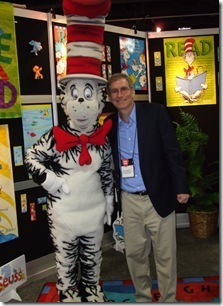
I write fiction—not exposés of real-life crooks,
Or heroic tales of surviving earthquakes,
Reality doesn’t a good story make,
An actual thing can be a nice seed,
To grow a story people might read,
I do get ideas from what may happen in life,
But I steer clear of true war-torn strife,
I make it up! I create!
I spin tales! I conflate!
Fabrication! Imagination!
Fantasmagorification!
Why be tethered to what’s in the news?
Why feel constrained by what is so true?
By the time the book hits, it’s been a long time,
Since the disaster or scandal or newsworthy crime,
Most people don’t remember the when,
Or even what happened way, way, way back then,
So I don’t rip stories from the screaming headlines,
Instead, I rip things from my super-deranged mind!
(Dr. Suess’s birthday is next week, so… my early birthday tribute.)
(This entry is “simul-posted” on Criminal Minds .)
February 7, 2013
Cranial Download, Anyone?
In your ideal world as a writer, do you foresee a balance of writing hardcopy books and stories and some ‘E’ material or, gasp, will your original work only be available in e-format one day? And does it matter??
In my ideal writer world, yachts, Greek islands, and dark-chocolate-covered marzipan figure prominently.
But allow me to answer the question a little more directly.
I’m a storyteller at heart, not a book provider. Now, don’t get me wrong. I love books. I think they are pretty close to the perfect way to deliver stories. They’re relatively cheap. And portable. And they smell good.
But other media have their advantages, too, and I don’t want to eliminate any portion of my potential readership by limiting the method of delivery for my stories.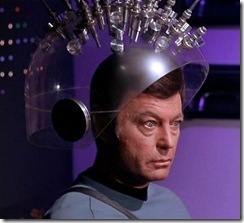
So, in summary, I’d like to provide my stories in whatever medium my readers want: ebooks and print books and audio and film and large print and direct cranial downloads, too, if it ever comes to pass.
Having said all that, I shall now contradict myself! (Just call me a fence-straddler.)
For the past year or so, I’ve been conducting an ebook experiment. I’ve self-pubbed two original ebooks, THE TASTE (horror) and FIRST TIME KILLER (thriller). In the next month, I plan to release another ebook original (RIDE-ALONG). Right now, there is no printed version available—only digital (At some point, if there’s sufficient demand, I hope to have all of these titles in print-print).
Why go the ebook original route? Many reasons: quicker to market, cheaper to produce, easier for readers to buy and a lower price tag, didn’t find a home in a big publishing house, larger royalties. However, here’s the biggest reason to offer affordable ebooks: BECAUSE PEOPLE WANT THEM. I learned in Marketing 101 that it’s generally a good idea to give customers what they want at a reasonable price.
Here’s one data point in my experiment: Last week, as part of a two-day Kindle Select promotional campaign, 11,000+ people downloaded free copies of FIRST TIME KILLER. (I know many of them won’t ever read it--a lot of people like FREE things, just for the FREE of it.) This tends to support my theory that: PEOPLE WANT AFFORDABLE EBOOKS (see above).
Does this mean from now on my work will only be available in e-format?
No, no, and no. PEOPLE WANT PRINT BOOKS, TOO!
It’s a strange new world out there, and my goal is to have as much chocolate-covered marzipan as I can reach as many readers as I can!
(This entry is “simul-posted” on Criminal Minds .)
January 24, 2013
Me and Oprah
Exposition – there’s no getting around the need to explain what’s going on at times in a story. Are you “gather them in the drawing room and have the sleuth lay it all out” type or how do you handle this?
“So Alan, you knowingly explain things for your readers in bold, brash exposition, right in the middle of your stories,” Oprah said, leaning in for the kill. “What is that?” 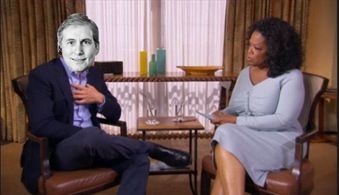
I swallowed and tried to put on my best game face. Deny or come clean? Or waffle? “Well, Oprah, I’m a storyteller, and I know it’s wrong to always simply explain things. It’s much better to place things in context, or to dole stuff out in small doses.” I paused. “Or even to sneak explanations into dialogue. I know too much exposition is wrong, but everyone does it. In fact, I don’t think I could have written those seven manuscripts without doing it.”
Oprah sat back, smug look on her face. “Yes, but what about your millions of fans? What about all those people who looked up to you, admiring you and your incredible achievements? Don’t you know that nobody likes exposition? Info dumps are boring. And frankly, they’re the mark of an amateur.”
Millions of fans? What was Oprah smoking? Sure, my family liked my stuff, but…I regrouped. “Oprah, I do my best, I honestly do. But sometimes there’s no other way. Sometimes you have no choice but to blatantly lay out what’s going on. I try to keep it short. I try to make it interesting. I try to come up with clever ways to make my readers take their medicine. I guess not everyone agrees with my methods. One thing I can promise: I’ll continue to strive to do better.”
She nodded, clearly not believing my latest line of B.S., then spoke earnestly to the camera. “We’ve got to take a break. When we return, we’ll really put our guest on the hotseat.” An aide rushed over to freshen Oprah’s make-up, while I sat there, alone with my thoughts.
I never was a fan of exposition. I preferred action, dialogue. You know, interesting stuff full of conflict. Not dull explanations that drag the narrative drive to a screeching halt. But at times, exposition was inevitable. So I did my best to slide it in without notice. Sometimes, I tried to slip some “story explanation” into my characters’ interior monologue. You know, have a character sit someplace, alone with his thoughts, recapping what’s going on in the story. Still, I often got the feeling that my efforts were clunky and transparent.
“And we’re back,” Oprah said, turning toward me. “America wants to know why you feel the need to hide behind passive and weak sentence construction. What do you say to those charges?”
I crossed my arms across my chest, in a vain attempt to keep my career from going down deeper in flames. “Mistakes have been made.”
(This entry is “simul-posted” on Criminal Minds .)
January 10, 2013
You Bet Your Bieber!
How much pop culture and/or current references do you put in your work? Do you fear dating the material versus giving the story a sense of immediacy?
This question is as groovy as the Fab Four playing Frisbee with Mick and Keith! 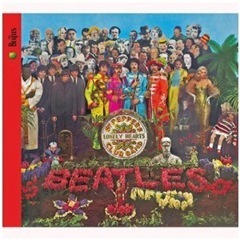
I have absolutely no hesitation about using any and all (clever) pop culture/current references I can wedge in (as long as they fit the story and the characters, of course). I believe the type of car someone drives or the kind of beverage he drinks or the TV shows a person watches says a lot about his character. A guy driving a Ford pick-up drinking Iron City who watches Justified is bound to travel in different circles than someone driving a Lexus drinking mangotinis who’s partial to PBS. (Yes, I’m including brand names in the discussion.)
To me, including pop culture references in a character’s dialogue (or interior monologue) adds verisimilitude. I mean, there are a lot of people (in the real world) enamored with pop culture (have you seen the tabloids at the supermarket checkout counters?). So why wouldn’t my fictional characters do the same? If they didn’t, they wouldn’t seem real, at least not to me.
Am I worried about my work becoming dated? Not in the least. I’d be ecstatic if people are still reading my work far enough in the future that my current references feel dated.
I do try to hedge my bets, where possible. When I do make these references, I generally try to pick an icon or very well-established brand, for two major reasons. I want as many people to “get” the reference as possible, and I believe that the more well-known someone or something is, the longer the staying power will be.
Besides, if Stephen King can get away with peppering his stories with pop culture references, why can’t I?
(This entry is “simul-posted” on Criminal Minds.)
December 13, 2012
The Pachinko Construct
What do you do when the story/characters/etc. bring you to a spot where you can go one way or another and both are great twists? How do you choose?
A writing instructor once told me that a book is simply the result of an infinite number of choices a writer makes as he/she tells his/her story. (To which I replied, “Simply?”)
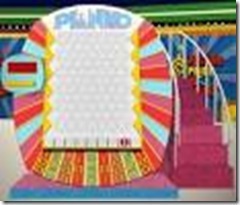 To visualize that concept, I sometimes picture a giant pachinko machine (or the Plinko game on The Price is Right) when I outline my story. As the idea “ball” drops through the story, it encounters thousands of junctures where the story could go one way or the other. Unfortunately, this complexity usually freezes me up, and I’ll have to lie down for a bit to recover.
To visualize that concept, I sometimes picture a giant pachinko machine (or the Plinko game on The Price is Right) when I outline my story. As the idea “ball” drops through the story, it encounters thousands of junctures where the story could go one way or the other. Unfortunately, this complexity usually freezes me up, and I’ll have to lie down for a bit to recover.
Seriously, though, that’s exactly what I do when I’m faced with a significant choice, a Path A or Path B kind of decision. I’ll step back and really think about the ramifications of each option. I’ll try to noodle through how the story will go under Scenario A, and then I’ll do the same with Scenario B (and C and D, etc.).
After I do that, I’ll flip a coin go with my gut.
Let me say that I do most of this “What Iffing” during the outline process, which makes it less likely I’ll face a significant decision point during the actual writing. But it happens once in a while (I welcome those flashes of inspiration with open fingers), and when it does, I’ll go lie down for a bit to think it over. Ah, the possibilities.
Of course, if the chosen twist turns out NOT to work out in the end, I’ll go back and revise my story until I get it right.
Pachinko, anyone?
(This entry is “simul-posted” on Criminal Minds.)
November 29, 2012
Jimmy the Raisin
How and when do you decide to make a minor character recurring? Or don’t you?
Some writers are lucky enough (skilled enough?) to create characters that speak to them. The characters “tell” the writers where they want to go in the story, what they want to do, who they want to kill. Sometimes I envy those writers because my characters just sit there, like misshapen lumps of modeling clay, waiting for some kind of direction from me.
And it’s not always easy to figure out what those characters should do—I was never good with clay.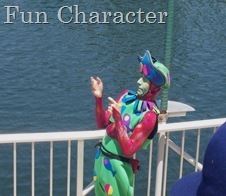
That’s why, when I do create a character that’s complex, fully-formed, and compelling, I like to keep him or her around for a while. I mean, those are the characters that are fun to write!
Thankfully, most of the “funnest” characters I’ve created are main characters who appear in every series book. But when I stumble upon a minor character who fits the bill—someone who is unique or fascinating (or humorous or dark or whatever) and is fun to write—then I’ll find a role for him or her in future books. (I’m all about the fun!)
It’s not just characters within a series that get considered for inclusion/exclusion. I took a fun-to-write character from a standalone work-in-progress and plopped him into one of my Last Laff books (with a name like Jimmy the Raisin and a face to match, how could I help myself?).
But Jimmy the Raisin didn’t seem to mind at all, or if he did, he didn’t complain to me. After all, I’m the writer, this is my show, and I can do whatever the heck I want. I don’t have to answer to anybody!
Right, Jimmy?
(This entry is “simul-posted” on Criminal Minds.)




